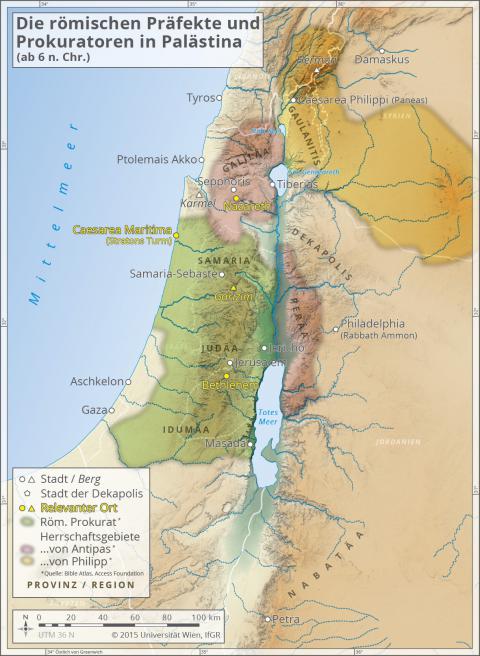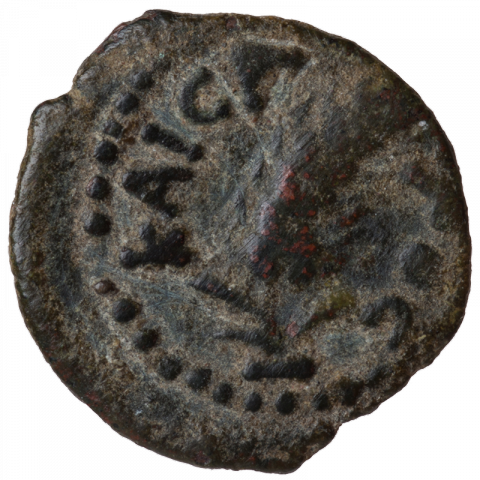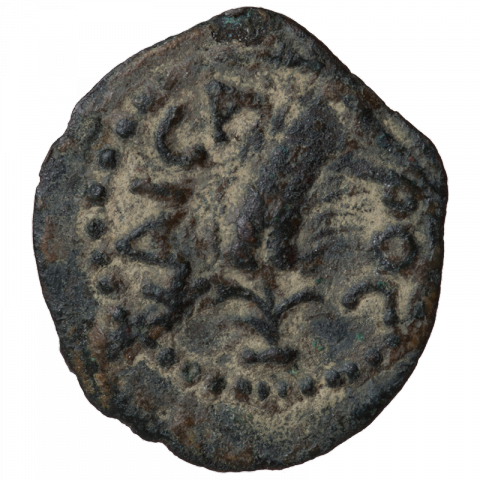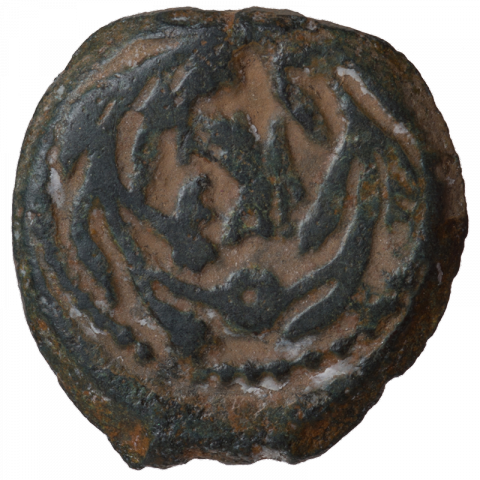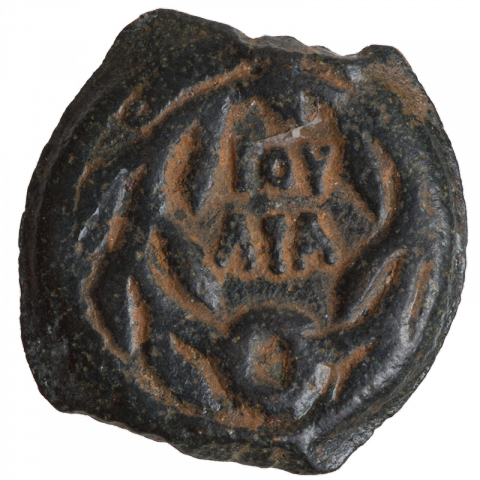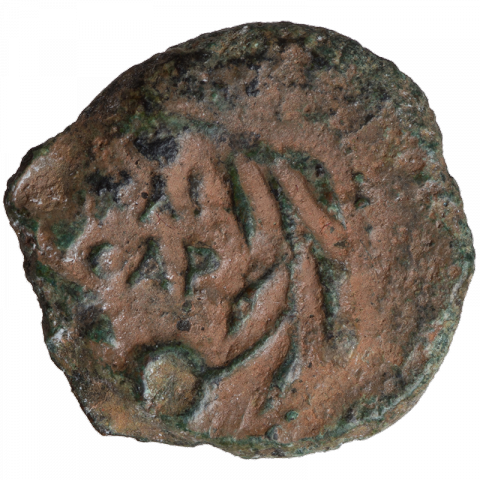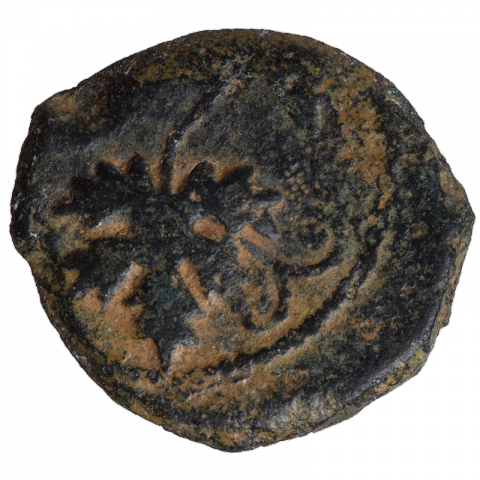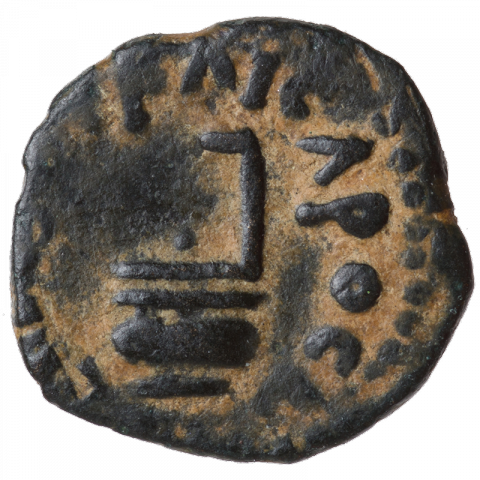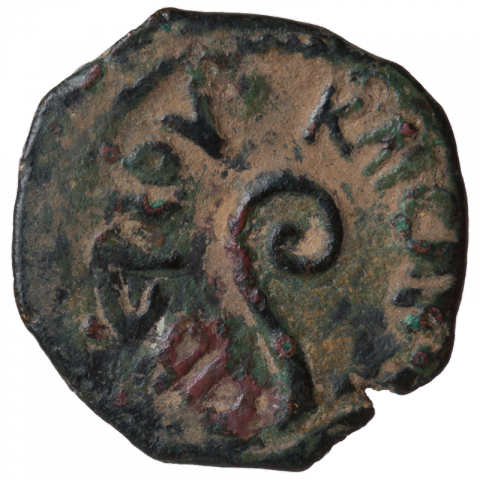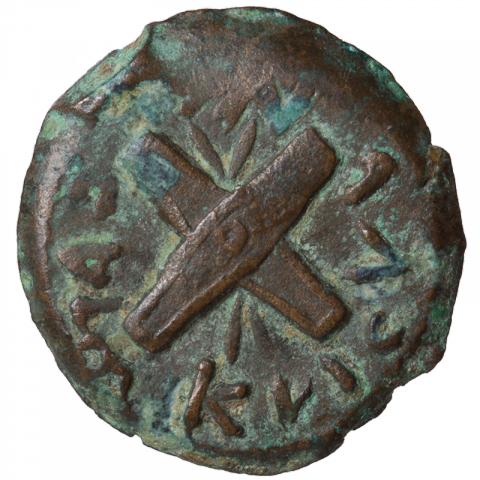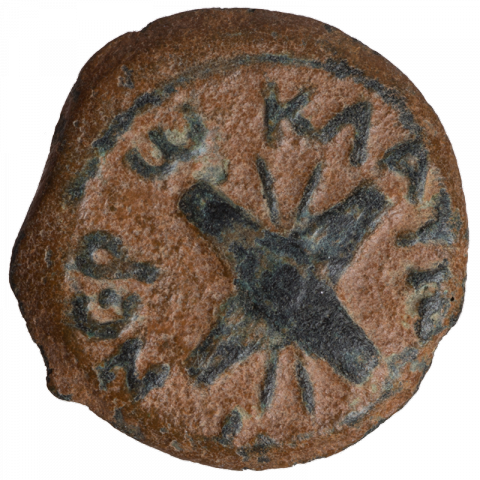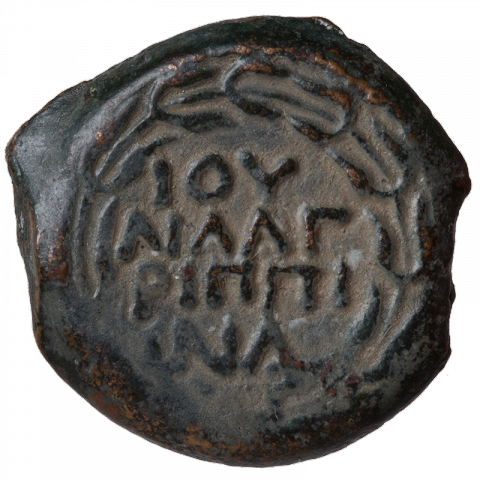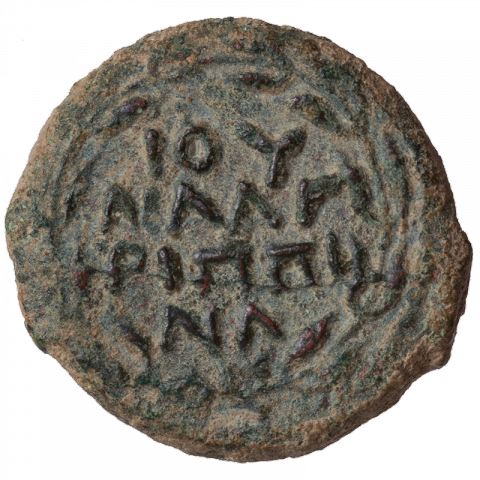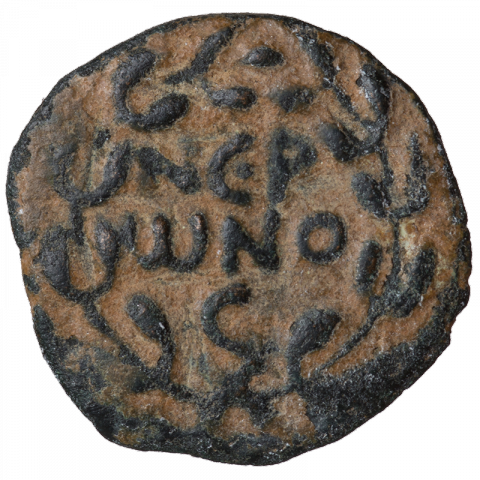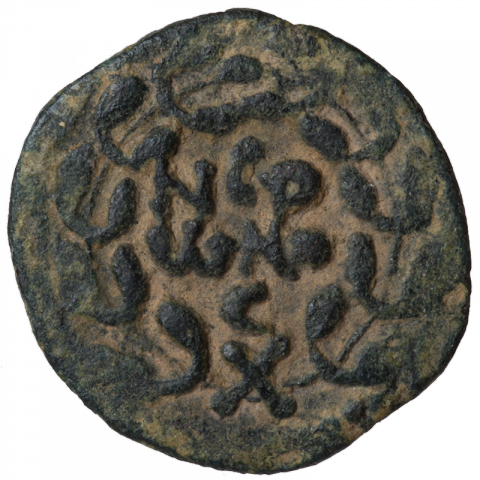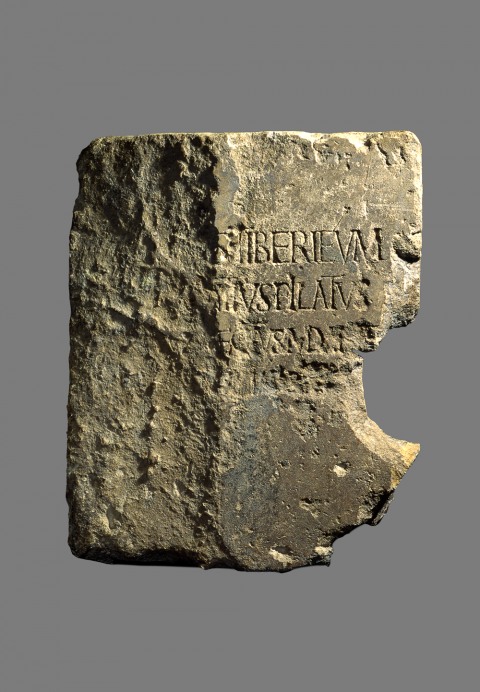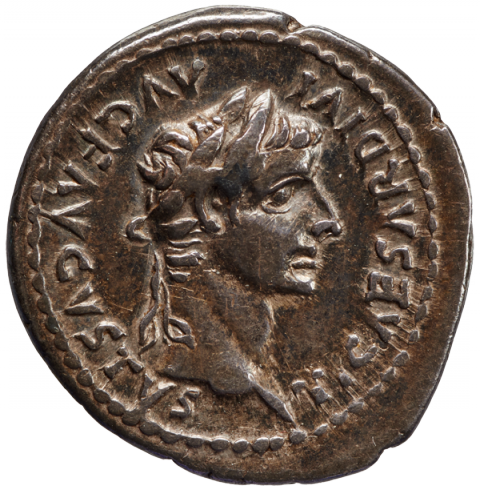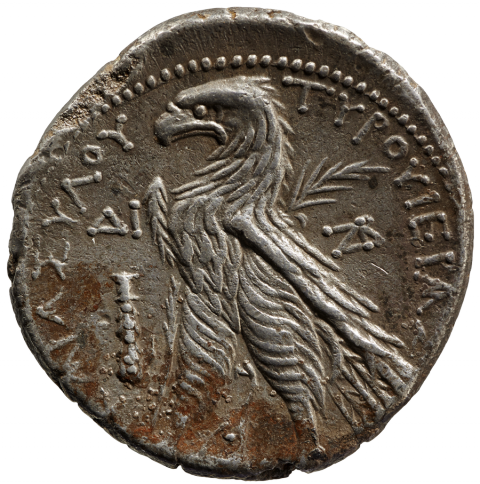The prefects and procurators minted their own coins. They considered the religious feelings of the Jews and avoided the usual images of the Roman emperor. The imperial portrait was ubiquitous in coins minted outside of Judea that circulated in Jewish settlement areas, however: in the incident of the tribute money, Jesus requests to see a Roman denarius in order to refer to the image and inscription of the emperor (Matthew 22,15‒22; Mark 12,13‒17; Luke 20,20‒26) (Fig. C.). The 30 pieces of silver of Judas Iscariot, on the other hand, were likely Tyrian shekels (No.13B Showcase 13).
The Coinage of the Roman Prefects and Procurators
The annexed region of exiled Archelaus contains the city of Jerusalem, in which the prefects were able also to use the mint there. The coins do not show images of the emperor. The date based on the reigning year of the current sovereign helps to assign the coins to the prefects. It is evident that coins were minted at irregular intervals, and not by all prefects.
The coins of the Roman prefects and procurators name the Roman emperor in their legends, but their representations respect the prohibition of images. The coins of Coponius show spikes of grain and palm branches (No.1A). These represent the most important agricultural products of the newly annexed land. The palm became a symbol for the province of Judea in Roman coinage. The name Coponius is not indicated on the coins – the only evidence for assigning the issues from the first three prefects are the dates in Greek numbers. The year 27 BCE is believed to correspond with year 1 of this era, when Octavian was conferred the honorific title of Augustus by the senate.
Valerius Gratus minted coins in the name of Tiberius and his mother Livia, in part with differing images on the reverse: while the herald’s staff between double cornucopias indicates prosperous times under Tiberius (No.2A), Livia is given lilies, which can be interpreted as a symbol of the goddess Juno (No.3B). The lily was also a genuinely Jewish emblem, however, as the use of the motif on procurator coins minted for Judea indicates (No.2A). Coins of the following year show a grape vine on the obverse and a kantharos on the reverse (No.5B). The Greek inscription ΙΟΥΛΙΑ refers to Livia, who became a member of the gens Iulia (Julian family) following her testamentary adoption in Augustus’ will.
Under Pontius Pilate, who only issued coins in three years, common symbols of the Roman religion appeared with the simpulum (ladle: No.6B) and the lituus (augural staff: No.7A). The augural staff in particular has been interpreted by scholars as a provocation, as it was also a Roman symbol of authority. References to Livia, who died in 29 CE, also end in this period.
After the short regency of Herod Agrippa I (41 – 44 CE), Roman procurators were sent to Judea. The first three apparently did not issue coins. Antonius Felix (52 – 57 CE) only struck coins in a single year: the coins in the name of Claudius refer with weapons to his victories in Britannia (No.8A); coins for the wife of the emperor, Agrippina, show crossed palm branches (No.9A). Coins were minted in 59 CE under Festus (59 – 62 CE), the last procurator (No.10B).
Further Reading
H. Gitler, The Thirty Pieces of Silver – A Modern Perspective, in L. Travaini (ed.), Valori e discalori simbolici delle monete. I Trenta denari di Giuda, Milan 2009, pp. 63–78
N. Kokkinos, The Prefects of Judaea 6 ‒ 48 CE and the Coins from the Misty Period 6 ‒ 36 CE, in: D. M. Jacobson – N. Kokkinos (Eds.), Judaea and Rome in Coins 65 BCE – 135 CE. Papers Presented at the International Conference Hosted by Spink, 13th – 14th September 2010, London 2012, 85‒111
A. Kushnir-Stein, New INR Classification for Early Roman Governors of Judea, Editor’s Note, Israel Numismatic Research 2 (2007), pp. 3–4
Y. Meshorer, A Treasury of Jewish Coins. From the Persian Period to Bar Kokhba, Jerusalem 2001
Y. Meshorer et al., Coins of the Holy Land. The Abraham and Marian Sofaer Collection at the American Numismatic Society and the Israel Museum, New York 2013, 2 vols.

